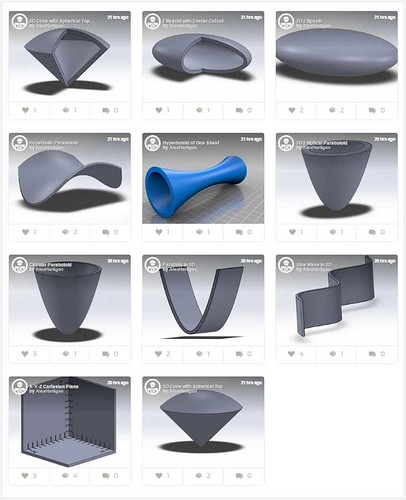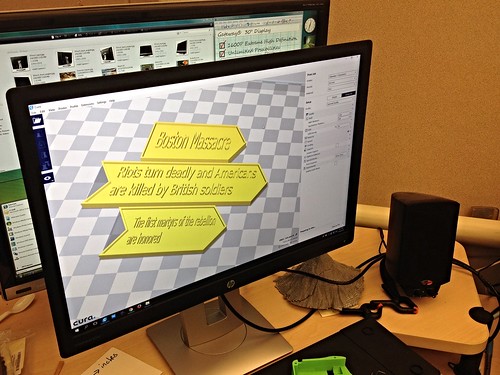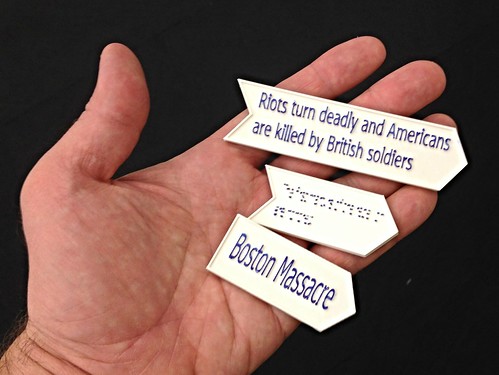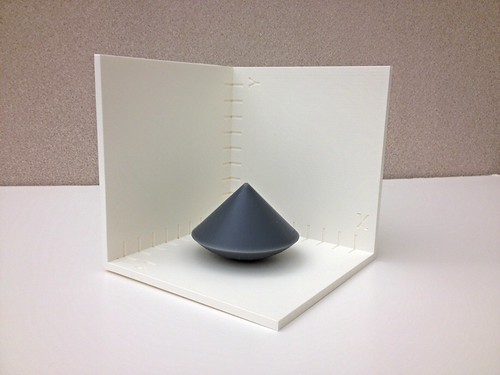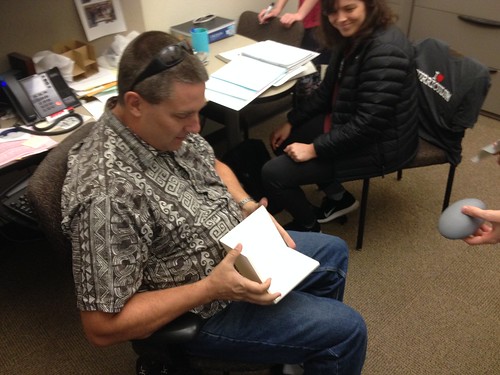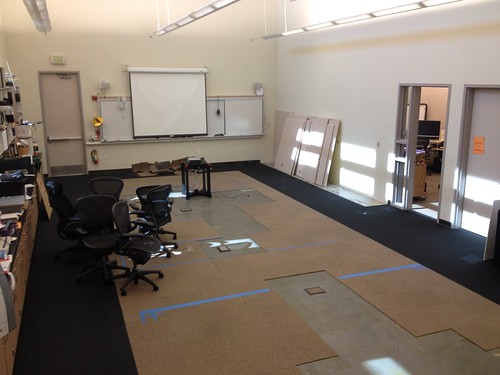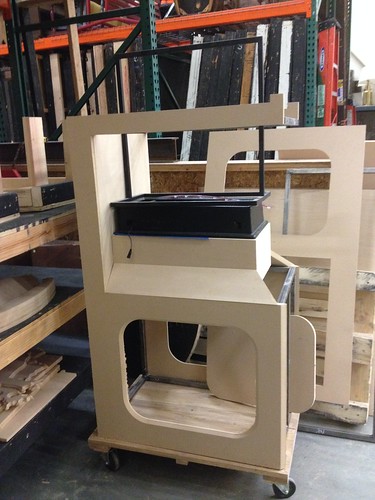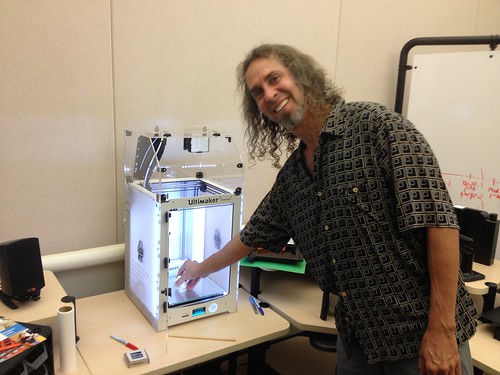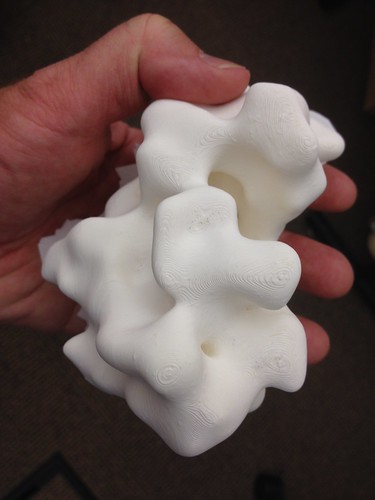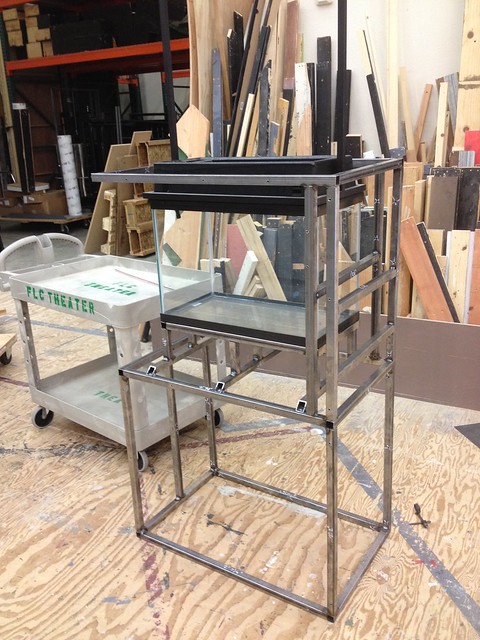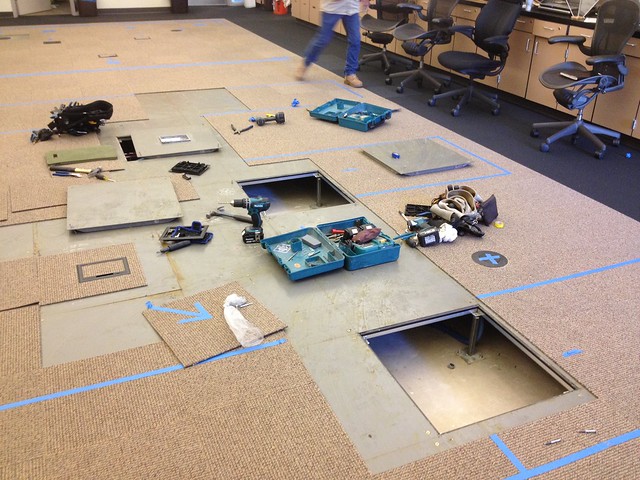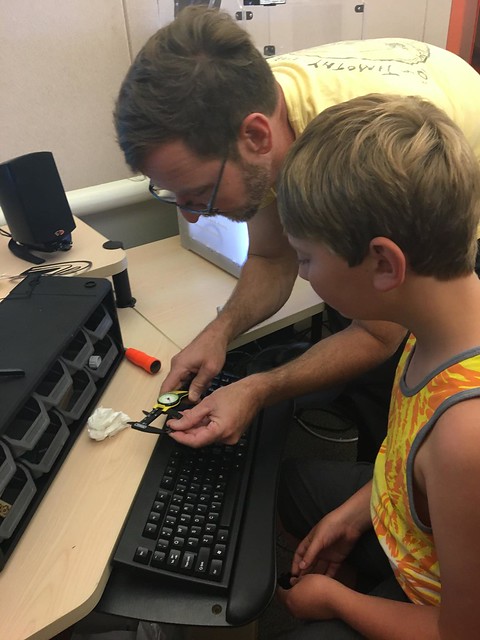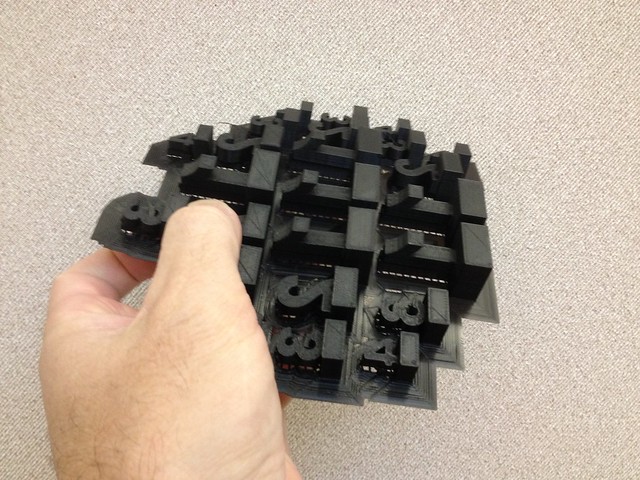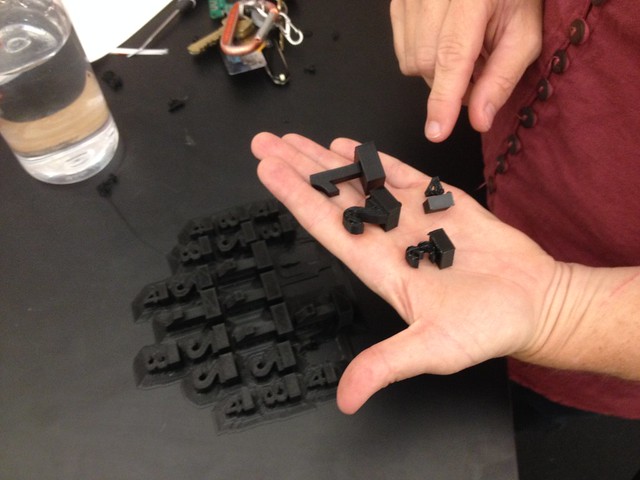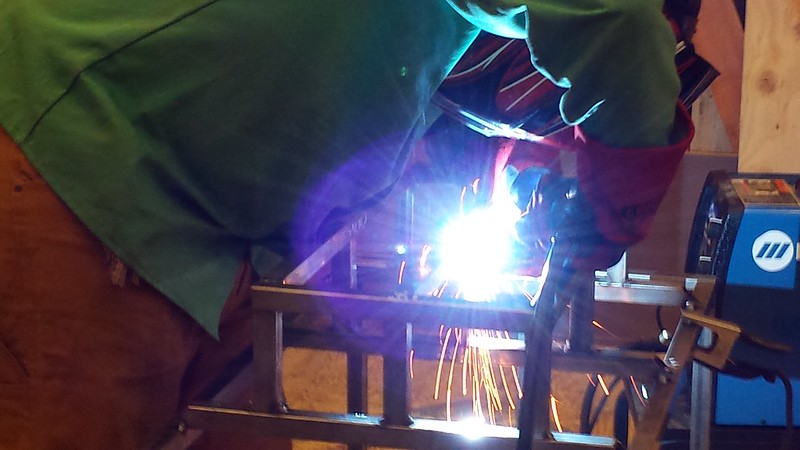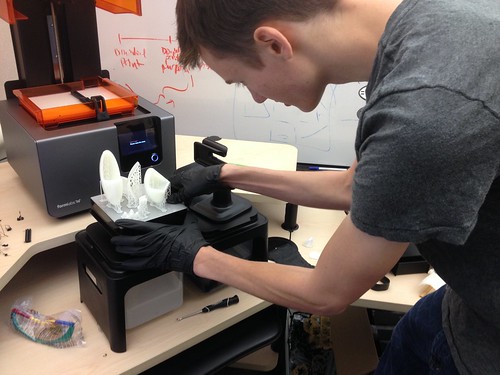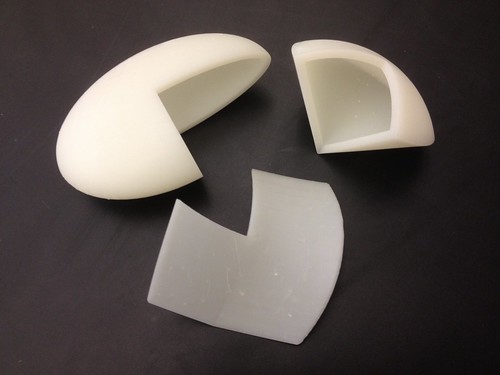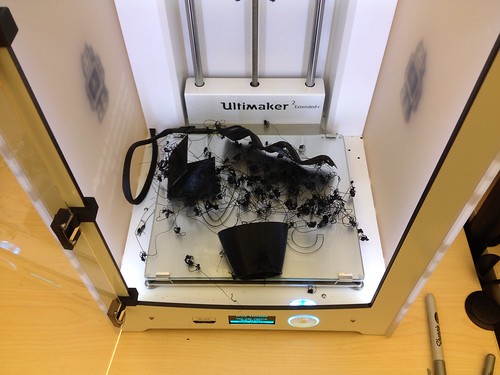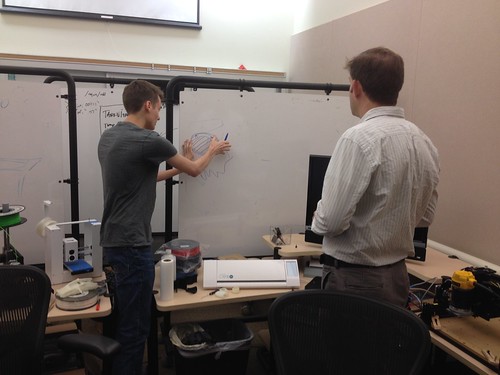Alex Hartigan (student) put all of the Calculus III models up on Thingiverse: Calculus III Models collection
Gena Estep (History) and I have been working on a prototype for a classroom activity that has students organizing and matching some important historical events and their outcomes. She showed me a paper prototype, and I cooked up a quick design in SketchUp for some interlocking game pieces:
A quick print and some post-processing with a Sharpie later…
The third tile didn’t quite work out, but for a first run it got the concept across. Next up: figuring out a reasonably quick production process for generating STLs for all the pieces needed. I’m looking into using OpenSCAD to create customizable objects for the Thingiverse customizer.
Alex Hartigan (student) designed and printed up this 3D Cartesian coordinate model for use with the Calc III models he’s been making lately in collaboration with Kevin Pipkin (Math, below). Turned out nice!
Old cabinets removed from the Innovation Center, which means that hopefully the flooring will be installed soon.
Ian Wallace (Theater Arts) and his crew are making progress on the aquaponics system. Another day or so of work, and we’ll be able to start piecing together the electronics and other systems.
Steve Holzberg (Biology), pulling a print of BCR-ABL, an unregulated kinase that causes cancer, off of the Ultimaker.
As a prototype, the print was fine, though a little small and bit janky on the bottom, so we set up another job and scaled it up. The result was much better, and I think the white filament is perfect for this particular job.
Wendy and Mike Appleby teach at Georgetown School in Georgetown, CA, where they’ve been developing the Georgetown Makerspace and associated programs. They’re starting a new gear-up phase, so I invited them to visit the Innovation Center the other day. They brought their son Sam, and we did some 3D printing, cut some stickers on the vinyl cutter, and set up a plotter job on the X-Carve. We talked about different ways we might work together, and decided on a “sister lab” concept. We kicked around some ideas for a partnership plan, to include sharing information and resources, maybe collaborating on some training, and hopefully hosting Georgetown School students for field trips and work days once our space is built out.
I work chiefly with adults, and it never ceases to amaze me how very competent some children are at using digital tools. After a brief introduction, Sam quickly figured out Tinkercad, and designed some sweet accessories for his action figure, though it took a few rounds of prototypes to get the scale right. Applied mathematics!
After a rather lengthy pause in the project, owing mostly to institutional rhythms, Cameron Hoyt (formerly a student, now an employee of the college in the Theater Arts Department) and his crew began work on the structural skeleton of the aquaponics display.
Below is Alex Hartigan, a Folsom Lake College Engineering student preparing some Calculus III models he’s been developing in collaboration with Kevin Pipkin (Math) and that he printed on the new Form 2, which has gotten a lot of use lately, most recently with the Enabling the Future project.
Alex and I connected last semester, and finally got the chance to work together on this Math project. Alex has a lot of skills in 3D design and printing, as well as experience on the Form 1, and through the process of preparing the Calc models, he taught me a whole lot about the finer points of printing on the Form 2, including various layout tips, and the manual editing of supports.
The Form 2 models came out great:
The Ultimaker 2 ones, not so much, though the failure at least resulted in some interesting artifacts:
Best of all, Max Mahoney (Chemistry) dropped by, and we recruited Alex to work on the chemistry project we prototyped the other day. One of my favorite parts of working with students is learning from them, and I hope to learn a lot from Alex before he heads off to Sac State next fall.

